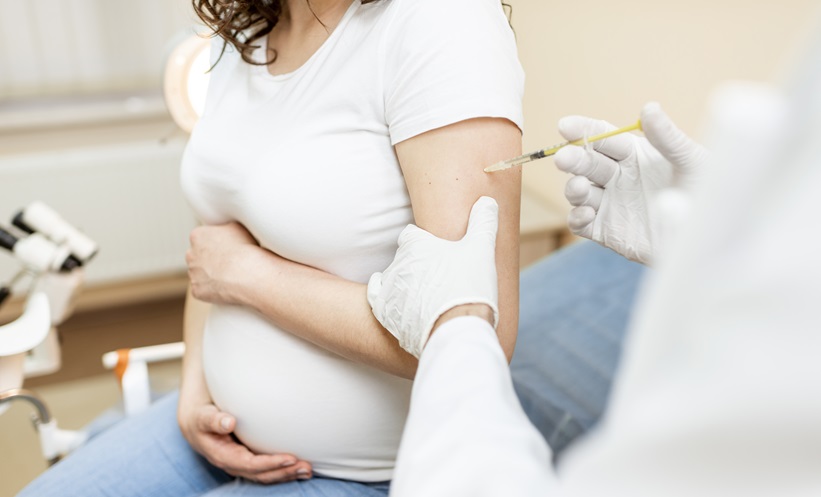WITH its scenic canals and rich history, Amsterdam is a vibrant city and popular travel destination for people across the globe. This year it was also home to the 40th Annual Meeting of the European Society of Human Reproduction and Embryology (ESHRE), taking place from 7th–10th July. The event gathered experts, researchers, and practitioners from various parts of the world to share and discuss the latest advancements in reproductive health and embryology.
The opening ceremony was a time of celebration and reflection of all the advancements in the field, and activity of the society in the past year. Karen Sermon, Chair of ESHRE, took the stage, marking several staggering statistics. This year, for instance, ESHRE welcomed 11,647 registered participants (93% in-person and 7% virtual) from 134 countries across the globe. Predominately, attendees come from Europe (57%), followed by Asia (26%), America (11%), and more recently Africa (4%) and Oceania (2%). This figure speaks to the global reputation ESHRE upholds, and the epicentre of its Annual Meeting is for the field of reproductive health and embryology.
As with all congresses, abstract sessions constitute a key component of the programme and are an exciting opportunity to showcase the latest innovations in the field. For ESHRE, this was no exception. With a staggering 2,218 abstracts submitted, a record-breaking figure for the society, this year’s itinerary was packed with a diverse collection of research, ranging in topics from reproductive endocrinology and fertility preservation, to the ethics and law of reproductive medicine. Intriguing scientific findings discussed at ESHRE include a study identifying a familial endocrine disease linked to an increased risk of pregnancy loss. Moreover, for the first time, researchers have identified patterns of risk for several different types of cancer in men with fertility problems and their families.
Christina Bergh, University of Gothenburg, Sweden, was subsequently recognised as an honourary member of ESHRE, praised for her work as a researcher, educator, clinician, registry expert, and significant contributor to the society. The second ESHRE honorary member, Hans Evers, Professor of Obstetrics and Gynaecology, Maastricht University Medical Centre, the Netherlands, also took the stage, reflecting on his career and research endeavours.
Amidst the awards, the opening ceremony additionally featured a highly entertaining show from Victor Mids, an illusionist and doctor. He engaged the audience through several memory tests, illustrating the use of misdirection and illusion each time. In one exercise, Mids asked an individual from the audience which cup to ‘use’ or ‘get rid of’; one marked an ‘X’ and one without. Mids, as instructed by the audience member, crushed the cup with no ‘X’, later revealing that the ‘X’-marked cup contained a razor underneath. As the actions ‘use’ and ‘get rid of’ have not been specified, the magician could have crushed either cup upon request, whilst maintaining that the audience member made the correct choice. This clever trick illustrated how easily choices can be influenced and manipulated, providing a thought-provoking interlude that blended entertainment with psychological insight.
In conclusion, the 40th Annual Meeting of ESHRE in Amsterdam, the Netherlands, was a resounding success, reflecting the society’s ongoing commitment to advancing reproductive health and embryology. The event not only showcased the latest research and innovations but also celebrated the achievements of the global reproductive health community. With its engaging sessions and diverse participation, the 2024 ESHRE Annual Meeting will be remembered as a milestone in the field. For more detailed highlights and insights from the congress, read on.
Familial Endocrine Diseases Linked to Increased Risk of Pregnancy Loss
THE RISK of pregnancy loss could be 6% higher in female patients with a family history of endocrine diseases such as Type 2 diabetes and polycystic ovarian syndrome, according to research presented at the 40th ESHRE Annual Meeting.
The study, from Copenhagen University Hospital Hvidovre, Denmark, examined the data of 366,539 patients and found that women with parents or siblings diagnosed with endocrine diseases had a higher risk of pregnancy loss. Specifically, the risk of pregnancy loss increased by 6% for women with a parental history of endocrine diseases and by 7% if a sister had an endocrine disease.
The study also demonstrated that women with endocrine diseases had a significantly higher risk of experiencing multiple pregnancy losses. Women with one pregnancy loss had a 15% higher risk of having another, those with two losses had a 30% higher risk, and the risk increased to 81% for those with three or more losses.
The lead author, Pia Egerup, Copenhagen University Hospital Hvidovre, Denmark, suggested that a shared genetic background, specifically involving high-risk human leukocyte antigens, could predispose individuals to both endocrine diseases and pregnancy loss. This connection is a previously underexplored risk factor in pregnancy loss, leaving space for further investigation.
It remains pertinent to remember that recurring pregnancy loss affects 2–5% of women and is accompanied by a significant psychological and emotional burden. Future investigations into the genetic mechanisms underlying this association could be key for both predicting which patients could be at higher risk of experiencing pregnancy loss and the development of prevention strategies.
The results highlight the importance of taking a thorough family history in clinic and represent a marked step forward in prenatal care.
3D Analysis of Blastocytes for In Vitro Fertilisation
THE SHAPE and structure of blastocysts can predict pregnancy success, aiding blastocyst selection for in vitro fertilisation (IVF). However, selecting the right embryo remains a significant challenge within IVF, as the quality of blastocytes is traditionally assessed with 2D methods which lack depth and comprehensive indicators.
A research team, led by Bo Huang, Huazhong University of Science and Technology, Wuhan, China, aimed to introduce clinically applicable 3D evaluation methods that can reveal previously unrecognised spatial features of blastocytes.
The study, presented at the 40th ESHRE Annual Meeting, included women under 40 years old with an endometrial thickness of 7–16 mm, and no more than one previous embryo transfer failure. Using a device called EmbryoScope+(Vitrolife, Gothenburg, Sweden), researchers took detailed images of 2,141 frozen-thawed single blastocysts. Advanced technology created 3D models of these blastocysts, capturing detailed information about their outer layer (trophectoderm) and inner cell mass. These models were further analysed to find new blastocyst features and determine how these features relate to successful pregnancies.
The model was tested by comparing it with fluorescence imaging of human blastocysts and achieved over 90% accuracy. Key measurements identified include the blastocyst’s size, shape, and cell characteristics. Parameters related to size, such as overall volume, cavity volume, and surface area, were linked to higher pregnancy rates. Specific features of the inner cell mass and outer layer were also strongly associated with better pregnancy outcomes.
Huang commented: “These results match what we see in clinical outcomes, but we couldn’t previously measure these. This study shows that the 3D shape of the blastocyst’s inner cell mass, its position, and how the surrounding cells are arranged can be important indicators of success, which we didn’t know before.”
Moving forward, the research team plans to collaborate with multiple centres to further validate these findings and invites reproductive centres worldwide to join these efforts. The ultimate goal, explained Huang and team, is to make the 3D evaluation of blastocysts a standard part of clinical practice, bringing new hope to people undergoing IVF.
New Drug Increases Embryo Implantation in Assisted Reproduction
IN A MAJOR advancement for reproductive medicine, OXO-001, a first-in-class oral, non-hormonal drug, significantly enhanced embryo implantation and live birth rates in women experiencing infertility and undergoing in vitro fertilisation or intracytoplasmic sperm injection.
Infertility affects one in six individuals of reproductive age worldwide, leading to over three million in vitro fertilisation cycles annually. Despite technological advancements, embryo implantation failure continues to be a significant hurdle. The Phase II clinical trial, OXOART2, addressed this challenge by evaluating OXO-001, a drug that targets the endometrium to improve implantation and pregnancy outcomes.
The randomised, double-blind, placebo-controlled study was conducted across 28 centres in Europe and recruited 96 women aged up to 40 years who underwent a single embryo transfer. Among them, 42 received a placebo, and 54 were administered OXO-001 daily, starting one menstrual cycle before the embryo transfer and continuing until 5 weeks post-transfer.
The results, presented at the 40th ESHRE Annual Meeting showed that the biochemical pregnancy rate in the OXO-001 group was 75.9%, compared to 52.4% in the placebo group. Clinically significant improvements were also observed in clinical pregnancy rates (fetal heartbeat 5 weeks post-transfer) and ongoing pregnancy rates (10 weeks post-transfer), with absolute increases of +14.3% (50.0% for OXO-001 versus 35.7% for placebo) and +10.6% (46.3% for OXO-001 versus 35.7% for placebo), respectively. Most notably, live birth rates saw an absolute increase of +6.9% (42.6% for OXO-001 versus 35.7% for placebo).
Agnès Arbat, Chief Executive Officer of OXOLIFE, a specialist biotech focused on women’s fertility, expressed optimism about the findings: “An absolute increase of more than 5 percentage points in ongoing pregnancy is clinically meaningful. We observed an increase higher than +9, giving renewed hope to patients and the scientific community.”
The side effects reported were similar between both groups, including mild-to-moderate headaches, nausea, vomiting, gastrointestinal issues, and dizziness. Importantly, a 6-month follow-up indicated no developmental differences in babies between the groups, confirming the drug’s safety and tolerability.
These findings mark a significant leap forward in assisted reproduction, offering new hope to women undergoing fertility treatment.
Recurrent Pregnancy Loss and Subsequently Increased Adverse Perinatal Outcomes
A HISTORY of recurrent pregnancy loss (RPL) increases the risk of adverse perinatal outcomes in subsequent pregnancy, according to new data presented at the 40th ESHRE Annual Meeting.
Isabelle Letourneau, University of Ottawa, Canada, and colleagues sought to clarify the implications of RPL on pregnancy outcomes by performing a systematic review and meta-analysis of studies on MEDLINE, EMBASE, Google Scholar, and Cochrane databases that discussed RPL and adverse perinatal outcomes from inception until July 2023.
Two independent reviewers extracted the data, and the estimated effects were pooled using DerSimonian and Laird random effect meta-analyses. Additionally, subgroup analyses were performed for those with unexplained RPL and by the number of pregnancy losses. Risk of bias was assessed using the Newcastle-Ottawa Scale. For the sensitivity analysis, only high-quality studies were used, and influence analysis was performed.
In total, 42 studies (n=5,619,124) were included in the meta-analysis. Whilst the authors noted inconsistent confounder adjustment and significant inter-study heterogeneity across the studies, the findings highlighted that compared to women without a history of RPL, women with a history of RPL had higher odds of adverse perinatal outcomes. These included an increased odds of pre-eclampsia (odds ratio [OR]: 1.19; 95% CI: 1.03–1.37), pregnancy-induced hypertension (OR: 1.24; 95% CI: 1.03–1.48), congenital anomalies (OR: 1.25; 95% CI: 1.02–1.53), stillbirth (OR: 1.25; 95% CI: 1.04–1.51), small for gestational age (OR: 1.31; 95% CI: 1.15–1.78), placental abruption (OR: 1.57; 95% CI: 1.37–1.81), caesarean delivery (OR: 1.65; 95% CI: 1.47–1.85), gestational diabetes (OR: 1.76; 95% CI: 1.28–2.44), preterm birth (OR: 1.79; 95% CI: 1.65–1.93), placenta previa (OR: 1.93; 95% CI: 1.59–2.35; 7 studies), perinatal death (OR: 2.04; 95% CI: 1.58–2.71), very preterm birth (OR: 2.58; 95% CI: 2.08–3.18), and placenta accreta (OR: 4.42; 95% CI: 3.09–6.33). The authors reported no association with aneuploidy.
From their findings, Letourneau and colleagues concluded that there are increased odds of adverse perinatal outcomes for those with a history of RPL. They suggested that alongside additional monitoring and counselling during subsequent pregnancy, further prospective research to elucidate the relationship between perinatal outcomes and RPL is urgently needed.
Larger Zona Opening Can Reduce Monozygotic Twin Rates in In Vitro Fertilisation
A RECENT study presented at the 40th ESHRE Annual Meeting has provided new insights into the factors contributing to the occurrence of monozygotic twins in human in vitro fertilisation (IVF) and proposed a potential approach to reduce its rates.
Monozygotic twinning, where a single fertilised egg splits into two embryos, occurs at a rate of 0.5% in spontaneous conceptions, but is significantly higher in IVF treatments. The contributing factors to this phenomenon have been identified to include ovarian stimulation, intracytoplasmic sperm injection, embryo cryopreservation, extended culture, embryo quality, maternal age, genetic factors, and particularly, micromanipulation of the zona pellucida, such as assisted hatching and biopsy. Despite various speculated causes, pinpointing the main reason contributing to monozygotic twinning has proven challenging, and currently there are no effective treatment approaches to lower the rate of occurrence in IVF.
Researchers studied monozygotic twins in 8,063 clinical pregnancies resulting from single blastocyst transfers from 2016–2023. The study specifically looked at the impact of zona pellucida manipulations on monozygotic twinning rates. Blastocytes were either fresh or frozen and were transferred with or without biopsy for preimplantation genetic testing and/or blastocyst collapse. Clinical outcomes such as live birth, ongoing pregnancy, and birth weight were evaluated, alongside clinical pregnancy and embryo implantation.
Results showed that in fresh blastocyst transfers, the rate of monozygotic twinning was significantly higher following biopsy compared to blastocysts without zona manipulation (3.4% versus 0.29%; p=0.025). In biopsied and cryopreserved/warmed blastocysts, the monozygotic twinning rate was similar to that of fresh transfers (2.79%). Interestingly, in the blastocysts that underwent partial zona removal before transfer, the monozygotic twinning rate significantly dropped to 0.6% (p=0.00001). Additionally, there was no significant difference in monozygotic twinning rates between biopsied blastocysts (0.57%) and those without biopsy (0.67%) when partial zona removal was performed.
In terms of clinical outcomes, 60.7% of monozygotic twin pregnancies in 56 patients resulted in live twin births, with an overall birth rate of 76.8%. While low birth weight (<1500 g) was predominantly observed in twin live births. Additionally, the rate of pregnancy loss during the first trimester was 17.8% and the rate of abnormal pregnancies was 5.4%.
Zona pellucida manipulations are linked to increased monozygotic twinning in IVF. The results of the study suggest that manipulating the zona pellucida by creating a larger opening before the embryo transfer can significantly reduce the rate of monozygotic twinning, and bring it closer to the rates similar to those of natural conception rates.
Patients with Polycystic Ovarian Syndrome Show Lower Body Appreciation
NEW research indicates that patients with polycystic ovarian syndrome (PCOS), while not associated with symptoms of anxiety and depression, were more likely to have lower body appreciation.
Routine screening of depression and anxiety in women with PCOS is recommended by the International Guidelines on PCOS. Previous studies have demonstrated that patients with PCOS have a higher chance of developing mental health problems, including concerns regarding body image and anxiety. However, the majority of research evaluating mental health problems in women with PCOS utilises comparison groups composed of healthy women without fertility problems. Tamara Jannik, Amsterdam UMC – University of Amsterdam, the Netherlands, presented research at the 40th ESHRE Annual Meeting examining mental health in women with infertility undergoing fertility treatment.
The study was a cross-sectional survey conducted from May 2021–July 2023. Researchers assessed the mental health and body appreciation of women undergoing fertility treatment in the Netherlands by utilising an online questionnaire. Information about the study was disseminated at fertility clinics through leaflets, posters, and Dutch patient organisations’ websites. The study included women with and without PCOS who completed the Hospital Anxiety and Depression Scale and the Body Appreciation Scale-2 (BAS-2). It comprised 1,025 women undergoing infertility treatment in the Netherlands, with nearly equal representation of those with PCOS (49%) and other infertility diagnoses (51%). Primary outcomes were clinically relevant anxiety and depression symptoms and BAS-2 scores. Logistic and linear regression analyses, adjusted for age, BMI, and duration of infertility, were used for data analysis.
The study found that 33.1% of women with PCOS and 31.0% of women without PCOS reported clinically relevant anxiety symptoms. Depression symptoms were present in 15.5% of women with PCOS and 14.5% of those with other infertility issues. Additionally, women with PCOS showed slightly lower body appreciation. The findings highlight that anxiety and depression are common among all women undergoing fertility treatments, not just those with PCOS. Researchers recommend that fertility clinics routinely screen and support all patients’ mental health as part of standard care.
Mild Ovarian Stimulation in Women of an Advanced Maternal Age
IN WOMEN of an advanced maternal age (AMA), aromatase inhibitor letrozole (LTZ) is more effective than clomiphene citrate (CC) for improving blastocyst formation and euploid rates with mild ovarian stimulation (MOS), according to research presented at the 40th ESHRE Annual Meeting.
Previous research has determined that the addition of CC or LTZ can reduce the gonadotropins dose. To optimise this strategy, researchers evaluated MOS outcomes with LTZ and CC in 288 women undergoing assisted reproductive technology between January 2020–April 2021.
Participants received 100 mg of CC (n=153) or 5 mg of LTZ (n=133) daily for 7 days during menstrual cycles three to nine. Additionally, 225 IU of recombinant follicle-stimulating hormone was administered during menstrual cycles three, five, seven, and nine. In menstrual cycle ten, a dual-maturation trigger was administered using recombinant human chorionic gonadotropin and a gonadotropin hormone-releasing hormone agonist nasal spray when at least three well-developed follicles (≥ 20 mm in diameter) were confirmed. Oocyte retrieval was then performed 35–36 hours after.
The results revealed that the average number of retrieved oocytes was 7.5±5.3 for women who received CC, and 6.3±4.7 for women who received LTZ (p<0.05). However, the euploid rate was significantly higher in the LTZ group compared to the CC group (p<0.05), with rates of 53.4% and 38.0%, respectively. The average number of blastocysts and morphologically good blastocysts were similar between groups.
The researchers next analysed differences between AMA women only. For AMA participants treated with LTZ, the blastocyst formation rate was significantly higher, at 58.5%, compared to 46.6% in those treated with CC (p<0.05). Additionally, the euploid rate was significantly higher in AMA women who received LTZ (40.5%), compared to the CC group (16.7%; p<0.05). The average number of blastocysts and rate of good blastocytes were comparable between the two groups.
The study’s findings emphasise the importance of considering age-related differences in selecting the optimal ovarian stimulation protocol, especially for women of advanced maternal age. However, it is important to note that not all participants received a trophectoderm biopsy, which may limit the validity and applicability of the findings.
The Link Between the Gut Microbiome and Endometriosis Pathology
THE AETIOLOGY of endometriosis (EM) is convoluted and multifactorial; however, a poster discussion session at the 40th ESHRE Annual Meeting suggested the aetiopathogenesis of endometriosis could be linked to the imbalance of microorganisms in the intestines, marking a step forward in EM research.
Sampson’s hypothesis of retrograde menstruation is the most commonly accepted theory to explain the origin of EM. However, given the characteristics and severe inflammatory response observed as part of EM, questions have been raised about the possibility of human microbiome involvement in the condition’s pathogenesis through the microbiome’s role in immune system modulation.
The study utilised a case-control design and began with 243 female participants who were recruited through a health questionnaire; the Endometriosis Health Profile-5 (EHP-5). After screening with inclusion and exclusion criteria, the resulting cohort consisted of 77 participants, of whom 34 were patients with EM, and the remaining 43 were healthy controls.
Stool samples were analysed using both 16S rRNA gene sequencing and various multivariate approaches. The purpose of the latter was to assess diversity, composition, and abundance of intestinal microbiota. Results revealed 18 significantly different taxa encompassing three families (Bacteroidaceae, Lactobacillaceae, and Desulfovibrionaceae), three genera (Blautia, Anaerostipes, and Lachnospira), and 12 species (Roseburia intestinalis, Bacteroides uniformis, and others).
Patients with EM showed higher diversity at the family and genus levels, while controls exhibited greater species diversity, indicating that a more complex microbial landscape is present in healthy individuals. The work suggests that EM is characterised by a few species from various families and genera, and these microbial differences are linked to molecular pathways involved in inflammation and oestrogen signalling pathways.
Additionally, correlations were found between microbial diversity and clinical parameters from the EHP-5 questionnaire, notably in self-image and infertility, with a strong positive correlation between infertility and the genus Anaerostipes.
Despite its promising results, the study acknowledges limitations, including the potential influence of external factors, although measures were taken to ensure there were no conflicts of interest. Overall, this research underscores the potential role of intestinal dysbiosis in endometriosis and highlights new avenues for targeted microbiota-mediated therapies.
Fertility Outcomes for Male Patients with Oncohaematological Disease
TREATMENT-induced fertility difficulties are a pertinent concern for male patients with oncohaematological disease, particularly for those undergoing systemic therapies or haematopoietic stem cell transplantation, which often result in infertility.
A poster presented at the 40th ESHRE Annual Meeting detailed a study that included 424 male patients diagnosed with oncohaematological diseases who preserved their semen between 1987–2018. The median age at the time of sperm banking was 27 years and the most common indication for cryopreservation was lymphoma, accounting for 86% of patients.
A substantial proportion of the cohort (24%) had undergone haematopoietic stem cell transplantation. Initial semen analysis revealed a median sperm concentration of 54 million/mL; however, post-treatment sperm analysis conducted on 57% of the participants showed that 36% were azoospermic. Among those with remaining viable sperm, 38% exhibited normal semen parameters.
The study participants, who survived at least 5 years post-cryopreservation, were assessed for natural and assisted reproductive technology conceptions following treatment. Findings showed that the natural live birth rate rose from 38–61% with the use of frozen semen during assisted reproductive technology cycles.
Of the 424 patients, 188 expressed a desire to father children, 71 of whom achieved this via a natural live birth, while 89 used cryopreserved sperm. Of those who used frozen samples, 51% experienced at least one live birth. Despite attempts, 33 men did not utilise their cryopreserved semen. Overall, 114 of the 188 men interested in fatherhood achieved a live birth.
This research highlights the significant impact of fertility preservation on the ability to achieve fatherhood post-treatment. However, the study’s single-centre nature and limited illness-specific data are noted limitations, which suggests the need for broader, multi-centre studies to support the wider extrapolation of these results.







